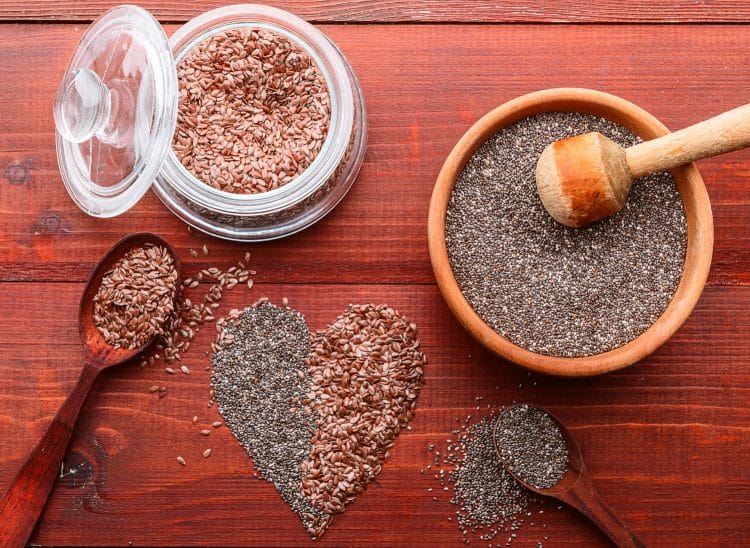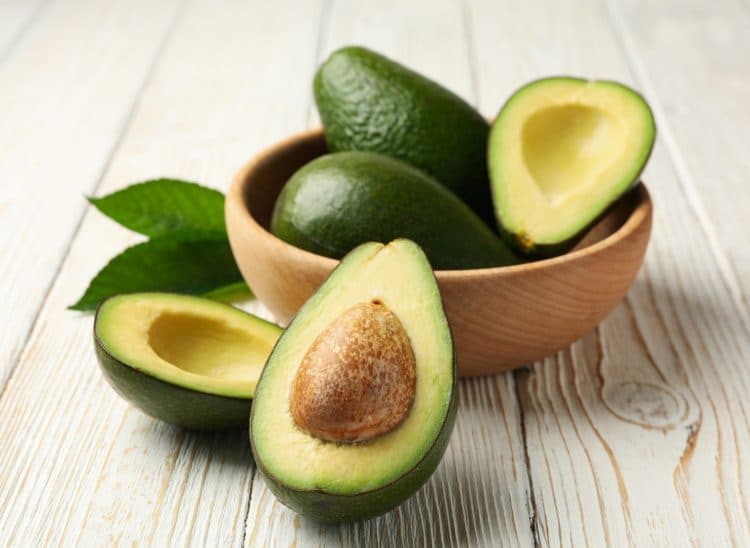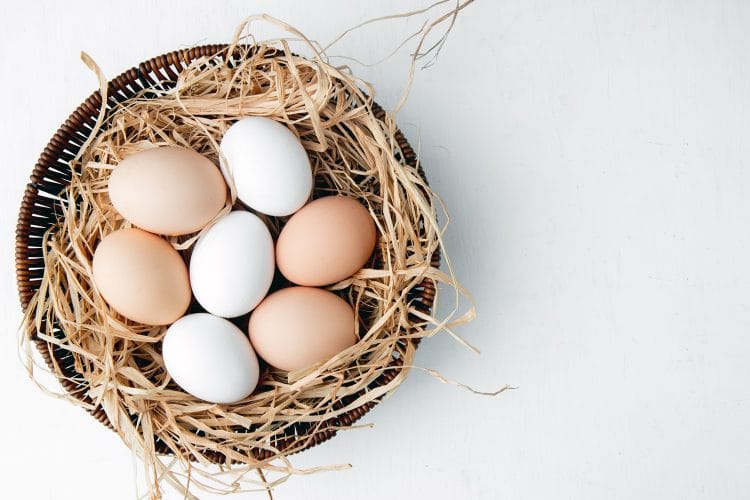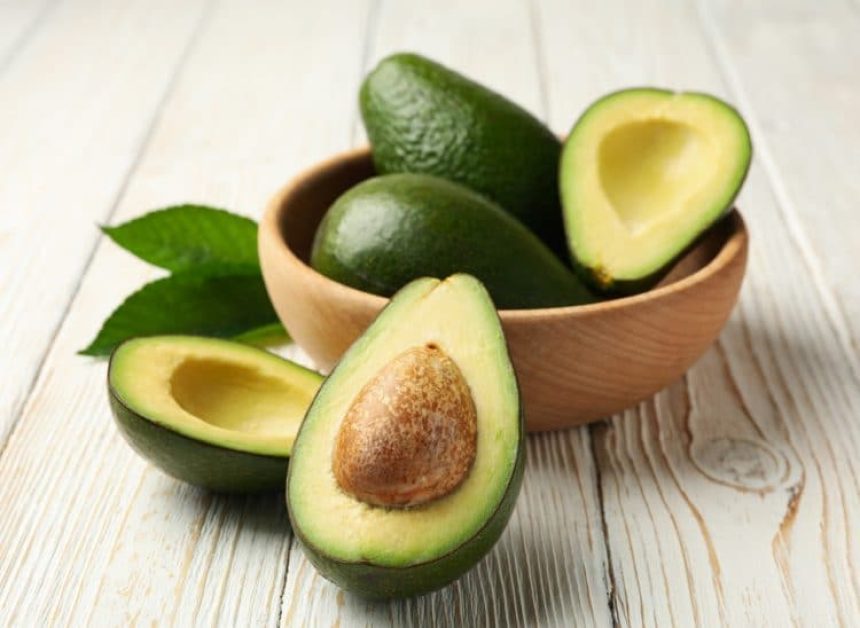High-calorie, low-carb foods fit perfectly with any diet plan that seeks to tweak macros for various reasons. Whether you follow a keto eating regime, or you like to keep things low-carb at certain parts of the day, there are several tasty and nutritious options to make this possible.
We’re not demonizing carbohydrates and neither should you or anyone else. In fact, good-quality carbs are necessary for energy, good health, and life. However, eating fewer carbs or not having this macronutrient with every meal can have its advantages.
Here are 11 high-calorie, low-carb foods.
Nuts and nut butters
Peanuts, pecans, Brazil nuts, almonds, walnuts… these are all amazing nuts that also happen to be calorically-dense, low-carb, and moderate protein. In fact, most nuts are that way in addition to being relatively high in dietary fats, vitamins, and minerals that support good health.

But let’s compare the calories and carbs between a couple of them. For instance, 1 ounce of almonds (23 whole kernels) contains about 164 calories, and 6.1 grams of carbs; about 2% daily value. It’s not a carb-free nut, but low-carb nonetheless.
Then we have pecans that offer 196 calories, 20g of fat, and 3.9g carbs or 1% daily value per 1 oz (19 halves). You probably noticed that pecans have a little more calories. Well, pecans and macadamia nuts tend to have higher calories and fats and fewer grams of protein compared with other nuts.
Cashews actually have more carbs than most nuts though which may be why they are so so delicious with about eight digestible carbs per serving.
But if you just need the extra calories then it really doesn’t matter. Plus, you should have a well-rounded diet anyway and if you have specific goals, then you’ll likely be more on top of your macronutrient (protein, carbs, and fat) ratios.
Nuts make for the perfect anytime snack whether you’re at home or on the go. You don’t have to prepare nuts and if you need to meet a specific calorie requirement for your goals; have a handful of nuts!
The same goes with nut butters as well and many prefer spreads to actual nuts. Nut butters are arguably more versatile too.
We know it’s easy to get nutty about our nuts and nut butters but we recommend opting for the minimally-processed, low to no salt and no sugar added ones.
Seeds
Hemp seeds, sunflower seeds, sesame seeds, flax seeds, and chia seeds are all good low-carb options. Seeds are great eaten alone, baked, and added to salads, yogurts, and more.

Some have more calories and carbs than others, but in general, you can’t go wrong snacking on any of the aforementioned seeds.
What’s so great about seeds? Not only do they offer little carbs, but, like many nuts, they supply heart-beneficial plant Omega-3s (alpha-linolenic acid); an essential fat that the body cannot create on its own, and fiber that helps to maintain a healthy digestive system.
Chia seeds, for instance, contain 138 calories per ounce serving while providing 2g of net or digestible carbs, 10 grams of fiber, 9 grams of fat, and 5 grams of fiber.
Because chia seeds have a high Omega-3 fat content, people who eat them regularly may benefit from their anti-inflammatory properties along with being good for the heart (1).
Consequently, seeds can help with weight management and managing Type 2 diabetes (2).
Each seed has its unique properties but generally, most studies find good evidence for anti-inflammatory effects.
Oils
Healthy oils should be a part of your diet and offer a similar nutritional breakdown as nuts and nut butters. Of course, this does vary depending on the type of oil.

A tablespoon of oil typically has about 120-130 calories and 0 carbs.
As you’ve probably noticed, it doesn’t take much to use a tablespoon of oil whether you’re cooking with it or adding it to your foods. Therefore, using oils is a very easy way to consume lots of calories minus the carbohydrates.
Oils are also very high fat, containing about 14 grams per tablespoon. But, you want to choose healthier oils as part of your daily diet regime.
The best oils contain more unsaturated fats such as olive, canola, flaxseed, safflower, sunflower, avocado, walnut, and there are a few others as well.
The ones you want to limit are coconut, palm, and partially-hydrogenated oils.
Dark chocolate
Mmm mmm… dark chocolate is one of the more delectable foods on this list. While we don’t suggest pigging out on it (although it can be hard not to), having it in moderation not only satisfies a sweet tooth but can have some health benefits as it contains potent disease-fighting flavonoids (antioxidants) (3, 4).

Not to mention, it’s a respectable source of fiber, and the minerals iron, magnesium, copper, manganese, potassium, zinc, phosphorous, and selenium.
But you definitely want to get a good, pure dark chocolate from a quality brand that specializes in this sort of thing. Quality is key, otherwise, you get a bunch of other added ingredients such as butter fat, vegetable oils, etc.
Dark chocolate is typically made with 50-90% cocoa solids while milk chocolate is made with about 10-50% cocoa solids.
A good quality dark chocolate should have 70% or more cocoa, which also means less sugar.
Dark chocolate should not contain milk, which is what largely contributes to carbohydrates content.
A 1 ounce serving of dark chocolate supplies about 150-170 calories and 13g of carbs which is relatively low compared to most sweet tweets.
But a few of those are from fiber so there’s like 10g of net or digestible carbs. The other few grams are from fiber. This is actually how you should determine carbs content (5).
Avocado
The superior avocado is one of the tastiest and healthiest superfoods in existence. It’s a food that’s commonly included in diet regimes because of its healthy fat content; not to mention, it’s also very versatile.

You can have it in a sandwich, in a salad, use it for baking and so much more.
Now, avocados do come in several sizes so the nutrition info can vary. But typically, a whole avocado has 200 or more calories and 17g or more carbs. Most of the carbs from an avocado comes from fiber though. For example, about 13.5g of those 17g carbs are from fiber, and the rest comes from starch. Avocados are considered low-glycemic too.
The typical serving size is half of an avocado too, so you’d be consuming even fewer carbs along with vitamins K, C, E, pantothenic acid, and electrolytes such as potassium and magnesium.
Meats
Meats are incredibly high-protein and generally high-calorie, especially those with more fat. Beef, pork, chicken, turkey, lamb, are the more common meats from mammals and fowls but they do vary in nutritional content.

There are so many different cuts and types of meats within a specific category so you’ll need to determine the appropriate selections for your nutritional regime and preferences.
Let’s look at some examples of calories found in a few different meats.
100g of a juicy prime rib has about 400 calories while the same amount of flank steak consists of about 192 calories. Then you have turkey breast that has 147 calories per 100g.
There are essentially no carbs in most meats but be sure to read the package as some do, depending on how it’s prepared.
Fatty fish
Fatty fish such as mackerel, salmon, sardines, trout, tuna, etc, are higher-calorie and are also an excellent source of protein and healthy fats, such as Omega-3 fats.

A nice 4 oz serving of Atlantic salmon cooked in dry heat contains about 233 calories, 0g of carbohydrates, and a whopping 25 grams of muscle-building protein. Of course, if you add oil and all that, the calorie count will be a bit higher.
A half fillet of cooked king mackerel contains 206 calories and 0g of carbs.
Fish is one of the healthiest and nutritiously dense foods there is.
Plus, the American Heart Association (AHA) recommends having one or two servings of seafood per week to maintain good heart health (6). Of course, if you don’t eat seafood or if you’re vegan, then there are a lot of supplements that’ll give you a healthy dose of eicosapentaenoic (EPA) and (docosahexaenoic) DHA; fatty acids primarily found in marine sources.
Eggs
Eggs are no doubt the most popular breakfast protein source. But this eggcellent food also has a decent amount of calories depending on its size.

One large egg contains about 70 calories and .4 grams (0% daily value) of carbs. It also contains roughly 6 grams of protein and 5 grams of healthy fats.
There’s so much good in an egg but not all are laid equally. You should know what to look for to ensure you’re getting good quality eggs.
Bacon
Bacon is a go-to for keto dieters and unless you’re vegan, it’s hard to beat a crispy and fatty piece of bacon that melts in your mouth (you might be snackin on a piece right now).

Now, you can get all kinds of bacon from the grocery store. But, in general, bacon is higher in calories and fat while being a great low-carb option, that, like the other foods on our list, goes well with so many things.
A slice of low-sodium, pan-fried, uncured pork bacon contains roughly 43 calories and essentially no carbohydrates. Although, honey or sugar bacon will certainly add carbs.
Now, 43 calories may not seem like a lot but who eats just one slice of bacon?
Some bacon contains more calories than this though and so eating two-three slices can add up to nearly 200 calories.
But bacon should be eaten in moderation especially with the saturated fats, and the same applies to eating other types of meats.
Eating a lot of saturated fats can raise LDL (bad) cholesterol levels and therefore, is not ideal for the health of your heart. In fact, per the American Heart Association, no more than 5-6% of your daily calories should come from saturated fat (7).
Coconut milk
Coconut milk is used for so many dishes and food items and it’s absolutely delicious. It’s also a great alternative to animal milk. You’d also be happy to know that it’s pretty low-carb.

A cup of coconut milk has 552 calories and 13.3g of carbs (5.3g from fiber and 8 grams from sugar).
This same serving size does contain a lot of fat too, at 57.2 grams, with 50.7 grams coming from saturated fats (medium-chain triglycerides). Now, because it does contain so much saturated fats, we’d recommend consuming coconut milk in moderation.
Although it does contain medium-chain triglycerides (MCTs) that may be easier to breakdown for energy, there’s not quite enough evidence to show that consuming a lot of saturated fats in MCT form is healthy (8, 9).
It may raise HDL or the good cholesterol slightly but that much saturated fat is not recommended to be consumed in generous amounts.
So use coconut milk and oil sparingly.
But feel free to drink as much coconut water as you want as it contains lots of hydrating electrolytes!
Dairy
There are many low-carb dairy food items. Butter and ghee tend to have the least carbs at little to none. Cheeses like Swiss, mozzarella, and cheddar have 1-3 grams per 100g serving.

Plain Greek yogurt is also low-carb with a few grams more than the previous mentions, and so is cottage cheese, cream cheese, and whole milk plain yogurt.
Higher carb dairy foods are milk and buttermilk at about 12 grams per 100g serving, and sweetened yogurt tends to have even more carbs at 10-20 grams.
The number of carbs in a dairy product comes down to how each is processed and the lactose content, and these foods also tend to have more calories.
But even the lower-carb options like cheeses and butters contain a decent number of calories. So, dairy can make a great high-calorie, low-carb nutrition source.
Why High-Calorie and Low-Carb?
Let’s first get something straight here. Just because we’ve listed several high-calorie, low-carb foods, that doesn’t mean this article is only for those who follow a ketogenic or low-carb diet.
Although, these do make for great options due to the higher fat content.
Maybe you’ve met your desired carb intake for the day and you want a substantial snack or meal that’ll fill you up but that doesn’t have tons of carbs.
Sometimes carb-heavy meals can make you feel sluggish or you may need to watch your blood sugar more so at a specific part of the day.
Others do strict low-carb or keto dieting for the purpose of losing weight and potentially improving certain factors of health.
Bulking gym rats can also benefit from high-calorie, low-carb foods too.
It really doesn’t matter why; the foods mentioned above are suitable for most people regardless.
But if you do want to understand low-carb/keto dieting and the potential benefits, we have an entire section with lots of great information on this subject.
Wrapping Up
If you’re looking for high-calorie, low-carb foods, then you won’t find many better options than the ones mentioned above. You might be a keto dieter, bulking up, or just want to keep things low-carb for whatever reason.
Watching your macros can help you to achieve your fitness and health goals and it’s always good to have some nutritional knowledge.
Also, remember to check food labels to ensure there are no hidden ingredients that do not fit with your dietary regime.


